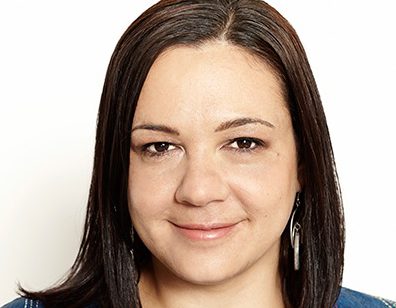Penny Smallacombe.
The Australian screen industry is on the “precipice of change” in giving more – and long overdue – recognition to Indigenous people and People of Colour creatives and stories, according to Penny Smallacombe.
As the head of Indigenous at Screen Australia, the Maramanindji woman who hails from the Northern Territory herself is an agent of change via a number of ongoing programs and upcoming new initiatives.
“This is both a scary and an exciting time,” she told Lowanna Grant in Media Ring’s The Yarning webinar. “There is a huge responsibility to do a large scale shift to bring more Aboriginal and Torres Strait Islanders into the industry and provide more opportunities for People of Colour to tell their stories.
“I’m deeply saddened that it took the murder of George Floyd in order to be in a place where the industry is finally ready to listen to conversations about racism, diversity and inclusion and what is wrong in our newsrooms and public broadcasters, that the rest of us have every single day of the week.”
Smallacombe suggested there have been too few culturally diverse shows like The Family Law and Redfern Now and pointed to the sea of white faces in the upper echelons of institutions across the screen industry.
“There has to be a huge shift in terms of how people recruit and mentor to get greater diversity at the top levels, which will then encourage and open up the doors for People of Colour to come through,” she said.
Listing numerous ways in which Screen Australia’s Indigenous department is fostering change, she aims to partner with the commercial free-to-air networks, issuing a call to executives at Seven, Nine and 10: “Come to us, find out about our great talent and how you can work with them.”
She wants to work with platforms such as Netflix (with which her department partnered on the Bunya Talent Indigenous Hub talent incubator that was to have taken place in LA in March) and Amazon Prime.
Also on her agenda, she aims to persuade network commissioners to be less-risk averse and tap into new and mid-career talent rather than rely on the most experienced Indigenous filmmakers.
“Otherwise we are recycling old talent,” she said. “I don’t want to watch Rove McManus (who fronts Life Drawing Live) on SBS, which is supposed to be our multicultural broadcaster.”
Broadening the focus beyond Aboriginal and Torres Strait Islanders people, she intends to share information on projects which worked – or didn’t work – with emerging creatives from different cultures who have few or no pathways into the industry.
‘Total Control.’
The department will continue to support a broad range of projects including high-end TV productions of the ilk of Total Control and Mystery Road, half-hour documentaries, online series and short films.
Smallacombe was studying Arts at the University of Melbourne when she saw Who Killed Malcolm Smith?, Richard Frankland’s 1992 documentary on the 1982 death in custody of Aboriginal Malcolm Charles Smith.
That inspired her to pursue a career in documentaries so she went home to Darwin and got a cadetship in producing with the ABC. That led to a move to Brisbane and later Sydney to work as a researcher on such ABC shows as Australian Story and Landline.
Subsequently she won a scholarship to do a Masters of Arts (Documentary Producing) at the Australian Film Television and Radio School. After serving as a producer for the ABC and in acquisitions for SBS she joined Screen Australia in 2014 and has been head of Indigenous since 2016.
Asked by Grant for her advice to aspiring creatives, she suggested subscribing to the Screen Australia and state agencies Facebook pages and websites to learn about their initiatives and programs.
Among her other recommendations: Create content on mobile phones and upload and for TikTok and YouTube clips; apply to study at AFTRS’ Indigenous unit; and watch shows on Netflix, Amazon and other media outlets to understand the kind of content that audiences and responding to.



